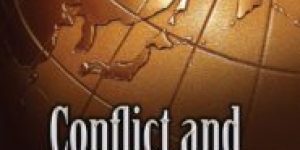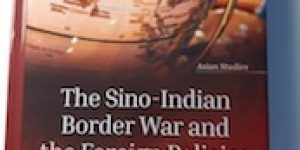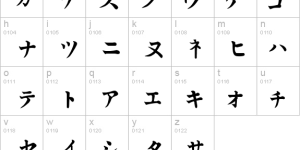My Story ~ Foreword
No comments yet In 1997 Stephen Fitzgerald, Australia’s first Ambassador to China, published a book titled “Is Australia an Asian Country?” It is an intellectual book, alert to the strengths and weaknesses of both Australia and China, but its populist, questioning title was deliberately provocative. The book includes discussion of “the history of our own society in relation to China” (p16) and China is “something of a touchstone” to Fitzgerald’s consideration of his own country. Australia’s knowledge of and attitudes towards China become a way for Stephen Fitzgerald to chart developments in Australians’ sense of their own identity. He is decidedly of the view that the “Asian challenge for Australia is not economic or commercial” but “intellectual, and the issues are political and cultural” (p4).
In 1997 Stephen Fitzgerald, Australia’s first Ambassador to China, published a book titled “Is Australia an Asian Country?” It is an intellectual book, alert to the strengths and weaknesses of both Australia and China, but its populist, questioning title was deliberately provocative. The book includes discussion of “the history of our own society in relation to China” (p16) and China is “something of a touchstone” to Fitzgerald’s consideration of his own country. Australia’s knowledge of and attitudes towards China become a way for Stephen Fitzgerald to chart developments in Australians’ sense of their own identity. He is decidedly of the view that the “Asian challenge for Australia is not economic or commercial” but “intellectual, and the issues are political and cultural” (p4).
These comments are worth remembering: they have just as much relevance today, and if the question in Fitzgerald’s title does not seem as startling as in 1997 it is because Australians have heard the question many times, have become more Asia and China aware and more knowledgeable about our neighbouring region. Not the least of the reasons for this progress is the extent of Asian, including Chinese, migration. Europeans who visit Australia nowadays are often struck by the extent of an Asian presence – of Asian faces in the street, in schools and universities, of Asian shops and restaurants, and of Asian participation in Australian industry. The dominant group in this presence is ethnically Chinese, although it must be stressed often from South-east Asia as well as mainland China.
Chinese migration to Australia actually has a long (by white Australian standards) history. There have been claims of Chinese explorers coming to Australia centuries ago but these remain controversial. What is sure is that in the last fifty years of the nineteenth century more than 100,000 Chinese migrated to Australia, mainly from Guangdong and Fujian provinces. They were driven from China by the Taiping Rebellion and other political upheavals and by natural disasters, and were drawn to Australia by the prospect of work (often as contract labourers with poor conditions) and by gold. Many suffered enormous hardship and racial vilification, many died and many left, but after gold petered out some set up small businesses and market gardens in both towns and cities. At the time of founding Australia as a nation in 1901 there were more ethnically Chinese people in the country than of any other non-European group. However, the first legal activity of the new Parliament was to enact the White Australia policy, so that the number of Chinese diminished from 30,000 in 1901 to 12,000 in 1947. The number in Western Australia, never very large, was less than 400.
All this has changed in recent years. The demographer James Jupp reports that the “China-born population doubled between … 1986 and 1991, and by 1996 had increased a further 40 per cent to 111,000 people.” (p219) This process has continued, and many other Chinese have come to Australia to work or study temporarily. These are the statistics which give the overall picture but they provide little or no character of the lives that these people have chosen or were forced to live. Behind every impersonal statistic is a living human being, a face, a pair of hands and a beating heart, with a story to tell. This book provides a scattering of those stories, transcribed and translated from interviews with the emigrants. These are people who have come to Australia during the last thirty years. Compared to earlier immigrants they are more diverse: they come from a wider range of provinces and cities of China, they are more highly educated (and many came initially for further education), and they have a greater variety of experience both before they came and after they arrived. Nevertheless, they share with their forebears numerous initial hardships and challenges, particularly those of poverty and loneliness, both largely enforced by language difficulties. The need to learn English is a recurrent theme in these stories, as is the importance of community networks and contact with home.
Such projects as this one are characteristically agreed to by those who have succeeded, but these interviewees are very open about the miseries they went through, the language and cultural differences, the loss of dignity, the long hours of often boring work and other hardships they had to endure in order to gain their success. Pleasingly, they often report great kindness from locally born Australians and none are aware of any racial discrimination. They also demonstrate a sense of honesty and responsibility along with their determination to succeed. They remain conscious of and loyal to both Australia and China; that itself I think is a sign of their strength of character. We are lucky to have them in this country.
Emeritus Professor Dennis Haskell
The Westerly Centre
The University of Western Australia
References:
Jupp, James (ed). The Australian People: An Encyclopedia of the Nation, Its People and Their Origins. Cambridge: Cambridge University Press, 2001.
Fitzgerald, Stephen. Is Australia an Asian Country? Can Australia Survive in an East Asian Future? Sydney: Allen & Unwin, 1997.
You May Also Like
Comments
Leave a Reply









